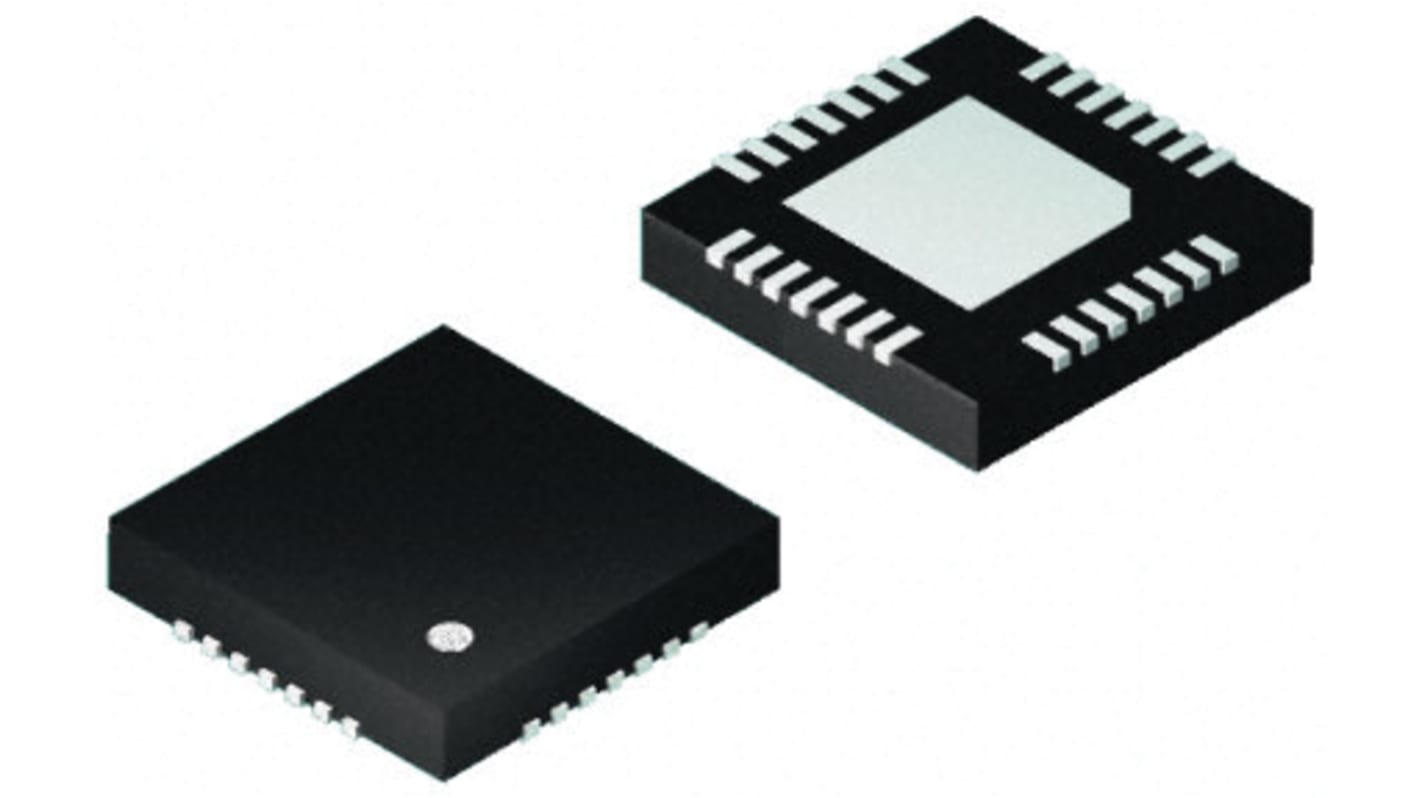Silicon Labs, 8bit CIP-51, EFM8BB Microcontroller, 50MHz, 16 kB Flash, 28-Pin QFN
- RS Stock No.:
- 865-6288
- Mfr. Part No.:
- EFM8BB22F16G-B-QFN28
- Brand:
- Silicon Labs

- RS Stock No.:
- 865-6288
- Mfr. Part No.:
- EFM8BB22F16G-B-QFN28
- Brand:
- Silicon Labs
Select all | Attribute | Value |
|---|---|---|
| Brand | Silicon Labs | |
| Family Name | EFM8BB | |
| Package Type | QFN | |
| Mounting Type | Surface Mount | |
| Pin Count | 28 | |
| Device Core | CIP-51 | |
| Data Bus Width | 8bit | |
| Program Memory Size | 16 kB | |
| Maximum Frequency | 50MHz | |
| RAM Size | 2.304 kB | |
| USB Channels | 0 | |
| Number of SPI Channels | 1 | |
| Number of UART Channels | 2 | |
| Number of I2C Channels | 1 | |
| Typical Operating Supply Voltage | 2.2 → 3.6 V | |
| Number of CAN Channels | 0 | |
| Number of USART Channels | 0 | |
| Instruction Set Architecture | MCU | |
| Program Memory Type | Flash | |
| Maximum Number of Ethernet Channels | 0 | |
| Width | 5.1mm | |
| Number of PCI Channels | 0 | |
| Height | 0.75mm | |
| Number of LIN Channels | 0 | |
| Dimensions | 5.1 x 5.1 x 0.75mm | |
| ADCs | 1 (20 x 12 bit) | |
| Length | 5.1mm | |
| Number of ADC Units | 1 | |
| Maximum Operating Temperature | +85 °C | |
| Pulse Width Modulation | 1 | |
| Minimum Operating Temperature | -40 °C | |
| Number of Ethernet Channels | 0 | |
Select all | ||
|---|---|---|
Brand Silicon Labs | ||
Family Name EFM8BB | ||
Package Type QFN | ||
Mounting Type Surface Mount | ||
Pin Count 28 | ||
Device Core CIP-51 | ||
Data Bus Width 8bit | ||
Program Memory Size 16 kB | ||
Maximum Frequency 50MHz | ||
RAM Size 2.304 kB | ||
USB Channels 0 | ||
Number of SPI Channels 1 | ||
Number of UART Channels 2 | ||
Number of I2C Channels 1 | ||
Typical Operating Supply Voltage 2.2 → 3.6 V | ||
Number of CAN Channels 0 | ||
Number of USART Channels 0 | ||
Instruction Set Architecture MCU | ||
Program Memory Type Flash | ||
Maximum Number of Ethernet Channels 0 | ||
Width 5.1mm | ||
Number of PCI Channels 0 | ||
Height 0.75mm | ||
Number of LIN Channels 0 | ||
Dimensions 5.1 x 5.1 x 0.75mm | ||
ADCs 1 (20 x 12 bit) | ||
Length 5.1mm | ||
Number of ADC Units 1 | ||
Maximum Operating Temperature +85 °C | ||
Pulse Width Modulation 1 | ||
Minimum Operating Temperature -40 °C | ||
Number of Ethernet Channels 0 | ||
EFM8BB Busy Bee Microcontrollers, Silicon Labs
Priority crossbar for flexible pin mapping
12-bit Analogue to Digital converter (ADC) with up to 20 channels
Up to five 16-bit timers
Integrated temperature sensor
UART, SPI and SMBus/I²C serial communication
